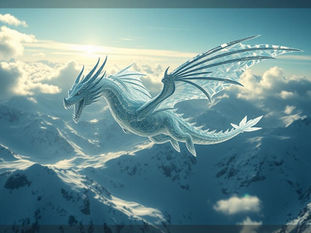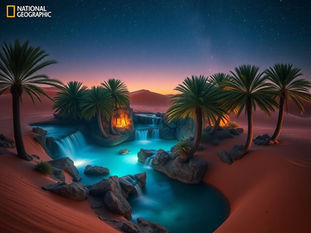
Enhance Your Midjourney Creations: A Guide to the Latest Style Features
Apr 30
4 min read
0
1
0

Midjourney keeps getting better for creators using AI art. A big recent step is the updates to the style references feature. This feature is important for keeping a consistent look across the pictures you make. If you want a certain texture, color palette, or general feeling, style references help you get it.
Using the style reference is straightforward. You add [--sref] to your prompt. Then you add the web address (URL) of an image you want to use. This tells Midjourney to make your new images match the style in your reference picture. This gives you more control over your art projects.
Understanding Midjourney Style References (--sref)
The main idea behind [--sref] is to give Midjourney a visual example of the style you want. For instance, you might have a prompt like "a woman sitting on a bench." If you add [--sref] followed by the URL of a photo you took, Midjourney will look at that photo's style. It will pick up things like the colors and the light. It won't copy the person or the chair, but it will use the visual style to create your requested image. The result is images that have the same feel as your reference, even though the subject matter is different.
[P]Using style references helps you:
Keep colors consistent.
Match lighting styles.
Reproduce textures or artistic vibes.
[/P]
Remember, the [--sref] command influences style. It does not make a picture of the same character or person. Midjourney has another feature for character consistency.
Introducing Style Versioning (--sv)
Midjourney added new options for how style references work. These are called style versions, using the [--sv] command. You can choose from different versions of the style reference algorithm.
The available style versions are:
[--sv 1]: This is an updated version of the first style reference algorithm. It gives better performance and can create vibrant results.
[--sv 2]: This was the standard version until recently. It's known for being reliable.
[--sv 3]: This version is an enhancement of [--sv 1]. It takes that approach and makes it stronger.
[--sv 4]: This is the latest version. It is based on [--sv 2] but has improvements. It works well for Midjourney V6 and Niji V6.
You can add [--sv] followed by the number (1, 2, 3, or 4) to your prompt alongside [--sref]. For example: [prompt]a woman sitting on a bench --sref [image url] --v 6.0 --sv 1[/prompt]. This tells Midjourney to use the style from your image using the Style Version 1 algorithm.
Discovering the best version depends on your preference. Some users prefer one version over another for different types of styles. Experimenting lets you find which version gives you the look you want.
Making many different images with Midjourney can be time-consuming. The Midjourney Automation Suite from TitanXT helps you manage this process more efficiently. It can speed up how you create and organize your AI art.
Using Multiple Style References
You are not limited to just one style reference image. Midjourney lets you use up to three `--sref` images in a single prompt. To do this, you simply add the URLs for each image after `--sref`:
[prompt]a woman sitting on a bench --sref [image url 1] [image url 2] [image url 3] --v 6.0[/prompt]
When you use multiple images, Midjourney will blend their styles. It will look at the colors, lighting, and feel from all the reference pictures and try to create a consistent style in the new images. This allows you to create your own unique aesthetic by combining elements from different sources.
For example, using one photo with warm colors and harsh light, another with cool colors and soft light, and a third with a specific texture could result in a new image that mixes those elements.
Applying Style References Creatively
Style references are not just for photography. You can use them with:
Mockup designs
Color palettes extracted from images
Any visual source that has a style you admire
This feature acts like a guidance system for the AI, giving you better control over the final appearance of your art. It helps ensure that your set of images has a consistent look and feel, which is very helpful for projects or series.
If you are creating many images for a project, keeping the style consistent is key. The Midjourney Automation Suite from TitanXT can help you maintain this consistency across large batches of images. Check it out at [LINK url="https://www.titanxt.io/midjourneyautomator"].
Experimentation is Key
The best way to understand these features is to try them yourself. Use your own images or images you find online as style references. Play with the different style versions (`--sv 1` through `--sv 4`). See how using one, two, or three style reference images changes the output.
Because art style is subjective, what works best for one person might not work best for another. The new style versions and the ability to use multiple references give you more tools to get exactly the style you are looking for.
As AI art tools like Midjourney continue to improve, features like enhanced style references give creators more power than ever before. We went from basic versions a short time ago to advanced tools today. It is an exciting time to be working with AI art.
Conclusion
Midjourney's updates to style references, including the new style versioning and multiple image capability, give creators better control over their AI-generated art. By using `--sref` with image URLs and exploring the `--sv` options, you can guide Midjourney to create images that match your desired aesthetic consistently.
Whether you need to match colors, lighting, texture, or an overall mood, these tools make it possible. Experiment with different references and versions to find your perfect style.
For those creating AI art regularly, streamlining your workflow is important. Consider using the Midjourney Automation Suite from TitanXT to help manage your projects and get consistent results efficiently. Visit https://www.titanxt.io/midjourneyautomator to learn more.






